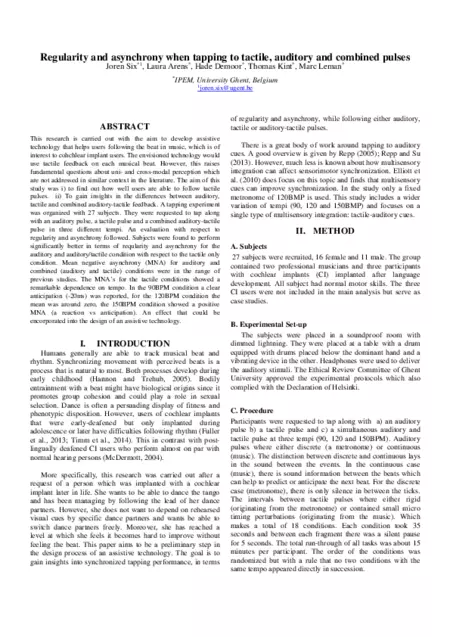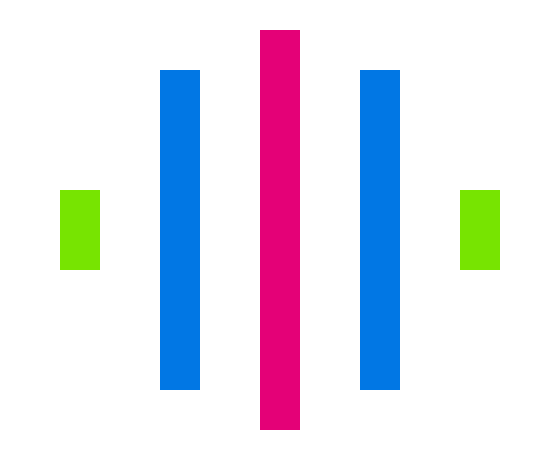Author version | Further information
Publication type: Articles in peer reviewed conference proceedings
Abstract: This research is carried out with the aim to develop assistive technology that helps users following the beat in music, which is of interest to cohchlear implant users. The envisioned technology would use tactile feedback on each musical beat. However, this raises fundamental questions about uni- and cross-modal perception which are not addressed in similar context in the literature. The aim of this study was i) to find out how well users are able to follow tactile pulses. ii) To gain insights in the differences between auditory, tactile and combined auditory-tactile feedback. A tapping experiment was organized with 27 subjects. They were requested to tap along with an auditory pulse, a tactile pulse and a combined auditory-tactile pulse in three different tempi. An evaluation with respect to regularity and asynchrony followed. Subjects were found to perform significantly better in terms of reqularity and asynchrony for the auditory and auditory/tactile condition with respect to the tactile only condition. Mean negative asynchrony (MNA) for auditory and combined (auditory and tactile) conditions were in the range of previous studies. The MNA’s for the tactile conditions showed a remarkable dependence on tempo. In the 90BPM condition a clear anticipation (-20ms) was reported, for the 120BPM condition the mean was around zero, the 150BPM condition showed a positive MNA (a reaction vs anticipation). An effect that could be encorporated into the design of an assistive technology.
Cite this article:
@inproceedings{six2017multimodalasync,
author = {Joren Six, Laura Arens, Hade Demoor, Thomas Kint and Marc Leman},
title = {{Regularity and asynchrony when tapping to tactile, auditory and combined pulses}},
booktitle = {{Proceedings of ESCOM 2017}},
year = 2017
}

